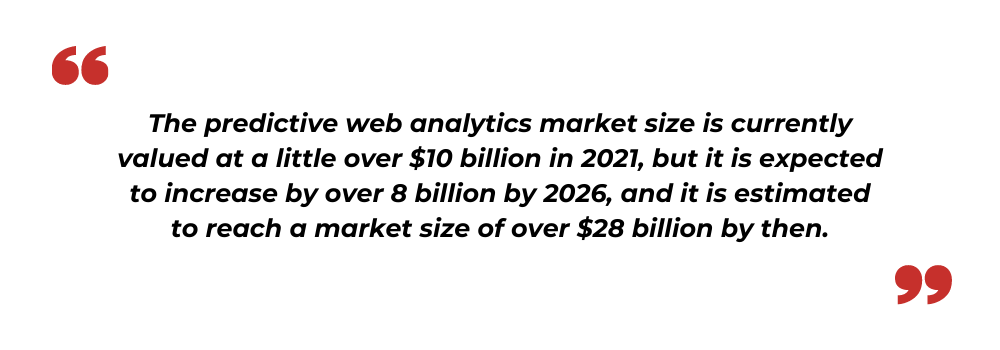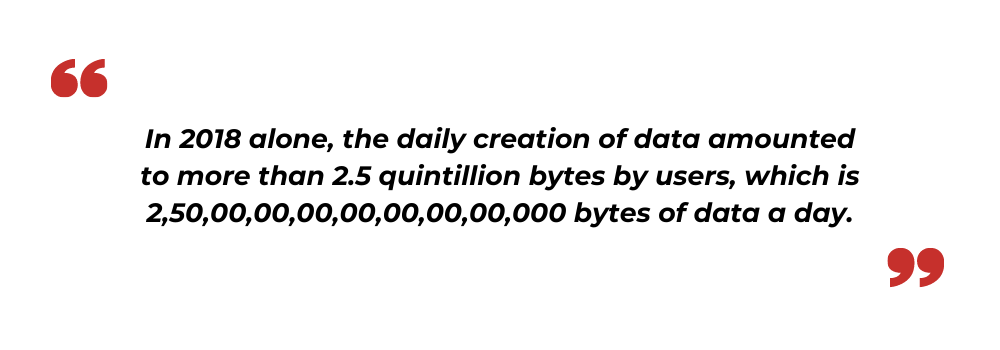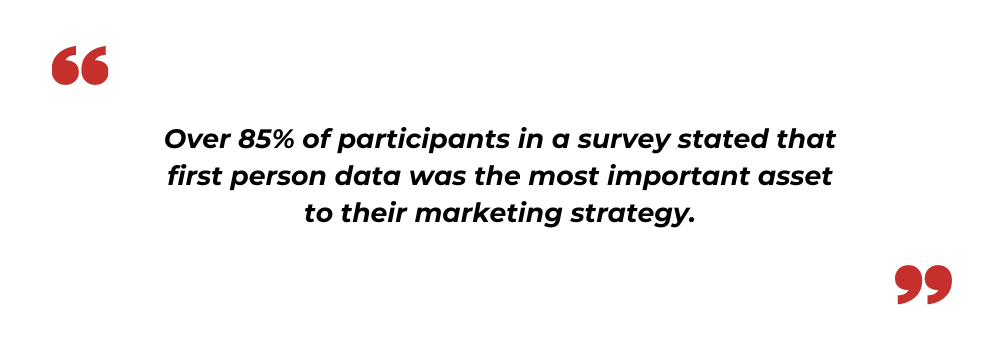The phrase, history repeats itself, is accurate on many levels, and it applies to the foundational concepts of predictive web analytics as well. We do not mean to say that the past occurrences and instances of the market will take place again, especially with the constantly evolving nature of web analytics. What it means is that the past data that we gather can help us gain a better understanding of what is to come in the future.
Historical data, when analysed correctly, has proven to create accurate insights for forecasting. The entire concept of predictive web analytics is based on this subject matter. So what is predictive web analytics and how does it empower companies to improve their web analytics and strategies for the future?
What is predictive web analytics?
Artificial intelligence has tools like machine learning that enable the processing of large amounts of data to create insights. Predictive web analytics makes use of these artificial intelligence tools like machine learning, algorithms and data to develop predictive insights for the future. These insights can help organisations develop more sound business strategies to enable growth and success in a highly competitive market.

The concept of predictive analytics has existed for many years prior to today. So what was lacking in terms of implementation to drive business growth and excellence in performance? The answer is technology. We didn’t have the right tools to implement our findings from web data analytics at a large scale, across the organisation. Now, with the advancement and easy accessibility of AI tools, companies can power their operations with predictive analysis, accurate insights, and develop future ready strategies.
The predictive web analytics market size is currently valued at a little over 10 billion USD in 2021, but it is expected to increase by over 8 billion by 2026, and it is estimated to reach a market size of over 28 billion USD (Yahoo Finance) by then. What does this say about the implementation of predictive data analytics across industries? How does it help enable growth for organisations?

How is predictive data analytics taking the front stage in driving business strategies?
As we can tell, the web analytics industry has made significant progress in the last few years, which is why it has increased in implementation across the world. Over time, predictive analytics has evolved with machine learning to be able to create more valuable use of the data that exists in the world. The amount of data has also significantly increased, allowing companies the freedom to observe changes in the market, consumer behaviour, economic changes, the political and social climate, and more. The amount of data generated everyday is honestly just staggering. In 2018 alone, the daily creation of data amounted to more than 2.5 quintillion bytes (Seed Scientific) by users, which is 2,50,00,00,00,00,00,00,00,000 bytes of data a day. This number has obviously increased significantly over the last three to four years as more and more users have been active online, and the number of devices in use have increased.
This creates a big pool of user data for organisations to go through, specifically catered to their niche in their industry. So the interest in using this large pool of data to generate valuable and actionable insights is also growing. Organisations can use the user data freely available online to understand their target audience and consumers better, so that they can create strategies that will have the most impact.

Another reason why companies are increasing the usage of predictive data analytics is because of the speed at which the data is being processed. Earlier, there was no hardware or software powerful enough to process that level of data at a fast pace. The lack of hardware, data centres, and servers, or the lack of accessibility to these structures made it impossible for most organisations to perform large scale web analytics.
Now, with the increase in accessibility of cloud-based programs and software, companies do not have to worry about having the data centres to process large volumes of data. A lot of these types of cloud-based software come with a subscription model so companies simply have to pay a nominal fee to enlist their services. Another benefit to this is that the software options available in the market are customisable to meet the organisation’s specific needs, and they come with an easy to use interface.
There are also data analytics services offered by a number of agencies and organisations that will take care of this task for you. So all you have to do is employ the right agency, and you will have the insights and reports at your disposal.
Predictive analysis has also grown in importance because of its necessity in today’s economic climate. Everyday, there are new agencies starting in the same industry. The internet has made reaching out to audiences across the world more accessible than ever, which means the level of competition in today’s world is higher than it has ever been before. Companies need to do their level best to stay ahead of the curve and at least match, if not exceed their competition, in order to survive. Predictive analysis acts as a solution to this problem. The insights provided by web analytics through data analytics services can enable organisations to stay competitive in today’s market.
What are the benefits of utilising predictive web analytics services?
As discussed before, the demand and requirement of web data analytics is quite high. So what are the other ways the field can help organisations besides drive better decision making?
Create more user-centric marketing strategies
Over 85% (Business 2 Community) of participants in a survey stated that first person data was the most important asset to their marketing strategy. This statement proves that data is a crucial part of any good marketing strategy. A great marketing strategy is one that creates value for the audience it is trying to reach. This can be done by identifying the pain points of the ideal consumer and then promoting one’s product or services as a solution for their existing problems. Consumer data is the most important element which will help you find out all that you need to know about your audience, including their spending habits, problems that they need addressed, and what existing solutions they are using. That way you can use the processed data to build better marketing strategies that speak to your consumer.

Optimise operational efficiency
By analysing historical data of the organisation’s performance over time, it also becomes possible for companies to improve their performance internally. You can track employee output, sales funnels, analyse different strategies that work internally and get a better understanding of the ones that do not. All of these steps can be used to track and understand what works best for the company and what does not. Using this historical data, one can use predictive analytics to create a more optimal workforce that only operates using strategies that work best for the teams at the company.
Read also: What is the future of battery technology?
Improve risk management tools and strategies
Risk management is a growing concern for organisations across the globe and across industries. The market can be extremely volatile, especially in times of crisis, and the impact of being ill-prepared can cost companies their entire business. The COVID-19 pandemic is one such incident. A lot of companies had to shut down their operations, and those who did survive faced large financial losses. If they had been prepared with risk management and mitigation strategies, they would have had adequate backup to sustain them through any unforeseen circumstances. Market risk evaluation and consumer behaviour can also be strong indicators of any volatility in the future. A machine learning tool that performs web analytics services can help develop insights that can help companies create better risk management strategies to ensure their survival in times of crisis.
Increase cybersecurity and improve the fraud detection tools
The large amounts of user data that companies have put them at risk of a cyberattack. They can lose personal information, sensitive information regarding their clients, as well as other crucial documents of the company. It can result in data loss, financial loss and might even cost someone their company. Web analytics acts as a medium through which machine learning algorithms track online activity so that they can forecast any developments of threats to their servers and data. This way, companies have the foresight to be better prepared and improve their cybersecurity measures as well as detect any fraudulent activity that might take place within the company itself.
Final Thoughts
Predictive web analytics is a part of data analytics services that uses new age technology, machine learning tools, and various algorithms to help companies improve their chances of success and growth. By investing in a web analytics tool or working with an agency that offers these services, organisations can take a more data-driven approach to their business development strategies, marketing strategies, risk management strategies, and more. It has become a crucial element of success, which is why web data analytics should be incorporated into every business’ operations.







